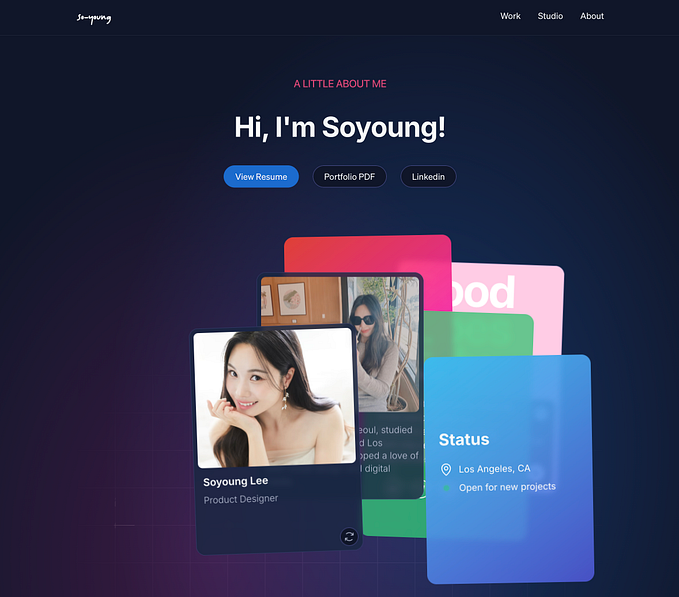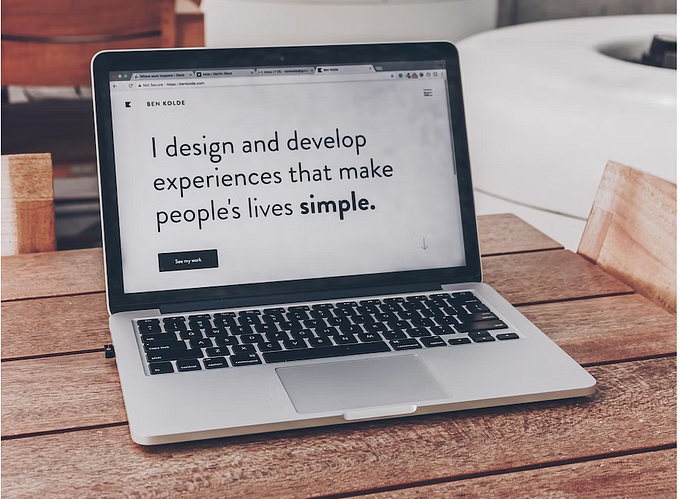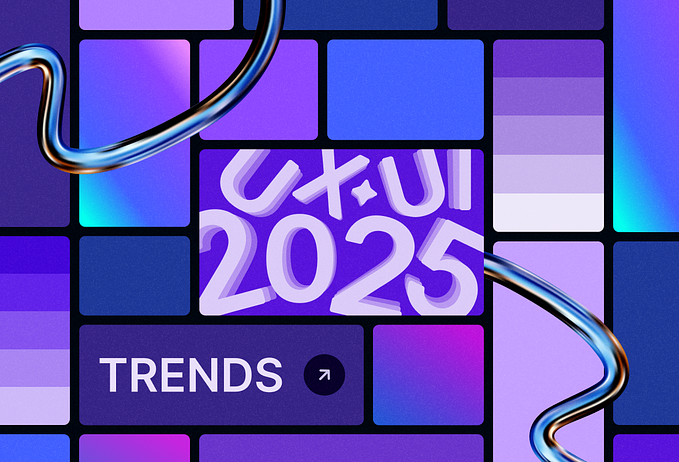
Before becoming a UX designer, I worked as a brand & web designer for many years. During these years, I always felt something was missing. Perhaps this is because in Germany, design is often equated with only “making things beautiful” (mostly from the subjective point of view of the sender). This often gave me the feeling of being stuck, and unsure how to navigate the next steps in my career.
It was time for change
Finally, I decided to build more awareness with online marketing efforts –but only with moderate success. Then, I tried online business with design courses and only to find that I didn’t enjoy it very much. Consequently, my work days became consumed by marketing tasks to complete, causing me to have a shortage of time to do the thing I really loved – designing.
And then I fell in love with UX design
Along the way, I read more and more blogs about UX design, and finally mustered up the confidence to start a 3-day UX design course. Immediately, I grew a liking to the methodical nature of the work and developing products based on user needs. Finally, I felt a sense of the purpose I was longing for. Right away, I wanted more of it and decided to develop step-by-step into a UX designer.
How I gradually became a freelance UX designer:
First, I changed my mindset
At first, I didn’t trust myself to make the transition to UX design. Honestly, I thought it was too late to change into a new professional field. But, the more I immersed myself in the subject, the more I let go of those old beliefs. Thankfully, my environment also encouraged me to make these changes, especially my sparring partner and my mastermind group. This made me realize how important it is to surround yourself with people who support and push you in your endeavors.
I’ve taken UX courses, read UX blogs, books and studied daily–and I still do
After committing to the decision to become a UX designer, I bought some books and picked a design school, happily landing on the Interaction Design Foundation (IxDF). After becoming a member, started with 3 courses.


Every morning, I got up early to study for at least an hour (in the early morning hours my concentration is especially high). After learning, I continued my day by working on my business. I found this routine really helped me, and I still work this way today. This structure allows me to not only learn new things, but I also stay up- to-date on UX and consolidate what I’ve learned so far.
Additionally, I join regular webinars and conferences, as I find they help translate new knowledge into context. Here is a list of some upcoming events.
I started my first Job as a UX/UI Designer
Through an existing client, I had the opportunity to start my first UX/UI project without any practical experience or portfolio. This allowed me to quickly get into practical work as well, and I am very grateful for that.
During the collaboration with the stakeholders and team, I ended up developing a new information architecture and design system for a SaaS product. It was a valuable experience and I am happy to say that we are still working together on the further development and optimization of the product.
If you don’t have this opportunity, don’t worry. Alternatively, you can gain practical experience in internships, as a volunteer, or a trainee. In addition to theory, this is an important step towards becoming a UX designer.
I created a strong portfolio
My portfolio as a brand & web designer used to show only visual representations of my designs. The portfolio of a UX designer is a bit different. A good portfolio for a UX designer tells in 3–4 relevant case studies:
- The summaries of your past projects,
- Which skills you’ve mastered,
- How you approach problems and
- How you work with others
Overall, it should give a sense of how you think, what drives you, and what your focus is in the world of UX design.
Of course, a good portfolio isn’t done in a few hours. If you need help, I can warmly recommend the course “How to Create a UX Portfolio” at the IxDF. Here you will learn how to put everything together to create a winning portfolio.
Alternatively, if you have no work experience and a lack of projects for the case studies, there are 3 courses at IxDF with realistic UX project briefings that you can build portfolio projects on:
- Design Thinking: The Ultimate Guide
- Conducting Usability Testing
- User Research — Methods and Best Practices
As a freelancer I developed a marketing strategy
There are so many marketing tactics you can use today, but like I hinted as previously , marketing is not exactly my “cup of tea”. However, some of the best things I learned were:
- to publish regular articles on my blog (in german) to help others, but also to increase traffic to my website
- to send newsletters to inform my clients and interested people about what’s going on in ux design
- to network and share tips on Linkedin, also on Instagram (with moderate success) and
- become active on a few freelancer brokerage sites
This strategy has served me well so far. But more importantly, it fit my personality and played to my skills, so it feels good to do it.
There are many other things you can do as well, like:
- Social Media (with more passion than me)
- Video marketing & Podcasts
- Ads (Social Media and Search Engines)
- Telemarketing 🥴
- Door-to-Door-Marketing
- Mailings
- …
My advice: Start with marketing activities that come easily to you – that will make it more enjoyable and you will probably hold on to.
If you want to make a change like this, take your time and be patient
If you really want it, a career transformation to UX design can be achieved (even though it will probably take more than a few weeks). Take the time you need and take it one step at a time, it will be worth the wait.
I love my work now more than ever, and I have doubled my earnings. So it’s easy for me to say: all the effort has paid off.
If you want to get started as a freelancer like I did, I’ve one last recommendation: take the course “How to become a Freelancer” at IxDF. This course teaches you what you need and how to get started, and gives you a good dose of courage to take the first steps.
I’m sure there are many other good design schools and training programs out there (such as the Norman Nielsen Group, for example). But in my case, the IxDF was able to guide me through all the steps I needed. Through the IxDF, I learned so much and was able to transform my career–and for that I am very grateful.
Happy day and all the best! ☀️




